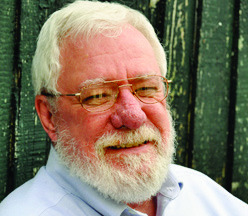Mouton’s cane syrup took the prize
Jim Bradshaw [email protected]
Alexandre (Aleck) Mouton, grandson and namesake of Governor Alexandre Mouton, made the best cane syrup in the world. At least that’s what the judges at the St. Louis World’s Fair said in 1903, giving it their highest award. That’s how the syrup came to be named Mouton’s Gold Medal Syrup.
The son of Sosthene and Odeide Mouton grew up on Walnut Plantation on the Vermilion River and became a versatile engineer who knew how to make money, literally. His first job was designing locomotives for the Pennsylvania Railroad, but then, as his obituary notes, he “erected and supervised the mint at Mexico City, where 190,000,000 pieces of gold, silver and copper money were coined under his direction.” When he returned to the United States, he worked for four years as the chief engineer for the New Orleans mint.
By then he was also becoming noticed as an expert wood carver. In his later years he made walking canes for his friends and even sent one to President Woodrow Wilson, who “used this gift during his last illness,” Mouton’s obituary recounted. But that was just a hobby, never a profession.

After his stay at the New Orleans mint, Aleck began to build and operate sugar and syrup mills for others. Most of them were successful, but as he studied the time-honored process of turning cane into sugar, he began to think that there was a better way to do it. As he explained in an unpublished memoir, most sugar makers drained the juice from crushed cane into an open pan, brought it to “violent heat,” then skimmed impurities off the surface of the boiling juice.
“This method removes only the bodies that can be seen with the naked eye. There still remains in the syrup other invisible ones that will cause the syrup to ferment or turn sour,” he said.
Aleck devised a sweeter, gentler way that removed impurities but kept the juice at even temperature as it was reduced to granulated sugar. When he could find no backers for his idea, he used practically all of his own money to build a factory himself.
“The syrup I made at my plant I sent to be exhibited at the Louisiana Purchase Exposition held in St. Louis,” he wrote. “There it got into the hands of the congress of judges and awards of the exposition, which classed it the highest grade of sugar cane syrup exhibited there; and awarded me the gold medal. … The syrup I exhibited was two years old and the award was based in part on its keeping qualities. I thus became known as the noted maker of the highest grade cane syrup in the world.”
But his success came to a flaming end when the plant burned in November 1905, and there was no insurance to cover the loss. “What was the real cause of its destruction … has never been determined,” he wrote. “The plant had stopped at the close of the day. … Everything was shut down and all the fires put out. Then early in the night all was afire and no water at hand to extinguish the flames. I shall never forget how I [felt], standing at no distance, unable to put a stop to the destruction of my work. I say my work, for I had put hands to every piece that composed its construction from the very beginning of its existence. … Nothing was left the next day … but the ashes and pieces of iron that could not be consumed.”
Aleck drew new plans for a bigger plant but still found no backers. Potential investors thought the mill was too big. When he designed a smaller one, they said it was too small.
“After . . . explaining to them that the Gold Medal Syrup, having been classed the highest grade made by . . . authorities of the world’s fair [and that it was] an unqualified success, all my efforts … were fruitless,” he wrote.
When Alexandre Mouton died in February 1938 at the age of 85, his obituary said “his long life embraced many noted services in varied fields of activity.” But he never again made “the best syrup in the world.” The drawings for another Gold Medal Syrup plant were still in his desk when he died.
You can contact Jim Bradshaw at [email protected] or P.O. Box 1121, Washington LA 70589.

